NASA and SpaceX return for second attempt at ISS mission, dock successfully
The SpaceX capsule that launched two astronauts into space has successfully docked at the ISS with some pretty special vision.
The SpaceX capsule that launched two astronauts into space from US soil for the first time in close to ten years on Sunday morning has successfully docked at the International Space Station.
NASA and Elon Musk’s company SpaceX sent veteran NASA astronauts Robert Behnken and Douglas Hurley into space from the Kennedy Space Centre in Florida at 5.22am AEST.
The capsule pulled up to the International Space Station and docked automatically after a journey that took approximately 19 hours.
Head on view of the space station from the @SpaceX #CrewDragon less than 150 meters away. pic.twitter.com/sHYR4VuaBD
— Intl. Space Station (@Space_Station) May 31, 2020
A successful launch means SpaceX has also become the first private company to send people into space.
It’s the first time astronauts have been sent into space from US soil since 2011, when the shuttle program ended.
What does our home planet look like from @SpaceX's Crew Dragon Endeavour? Watch as @AstroBehnken and @Astro_Doug take you inside the spacecraft and provide an update about our #LaunchAmerica mission: pic.twitter.com/f8b3CrSEPE
— NASA (@NASA) May 31, 2020
Though it was orbital night during docking, it is a new day for human spaceflight! pic.twitter.com/JhLeZPEBEq
— Victor Glover (@VicGlover) May 31, 2020
SpaceX and rival Boeing were awarded contracts in 2014 as part of NASA Commercial Crew Development Program that tasked private companies with building space craft to take people and supplies off the Earth.
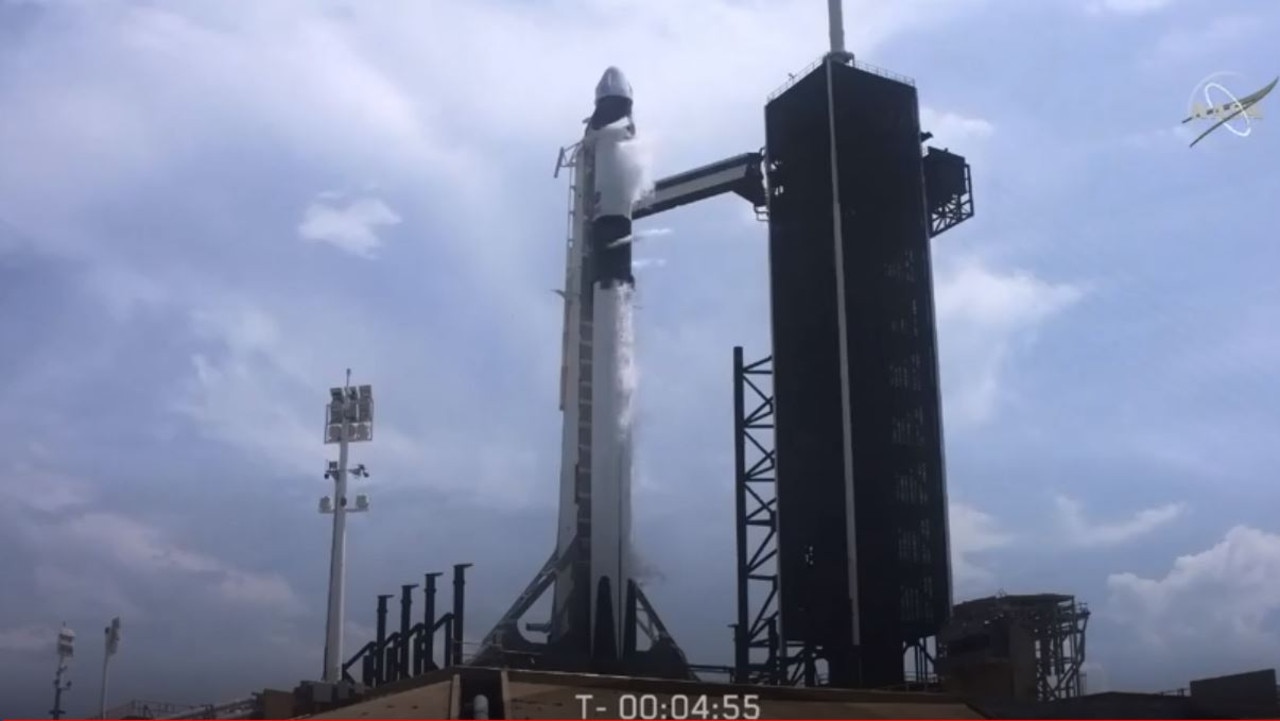
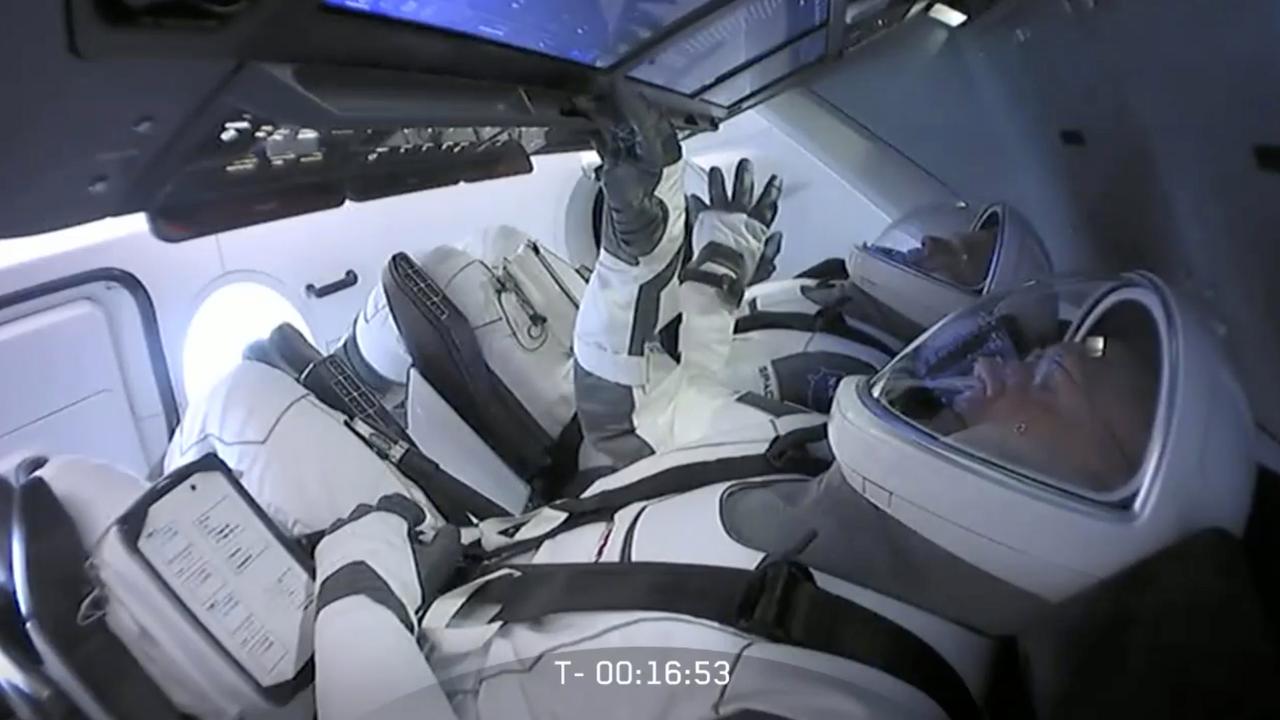
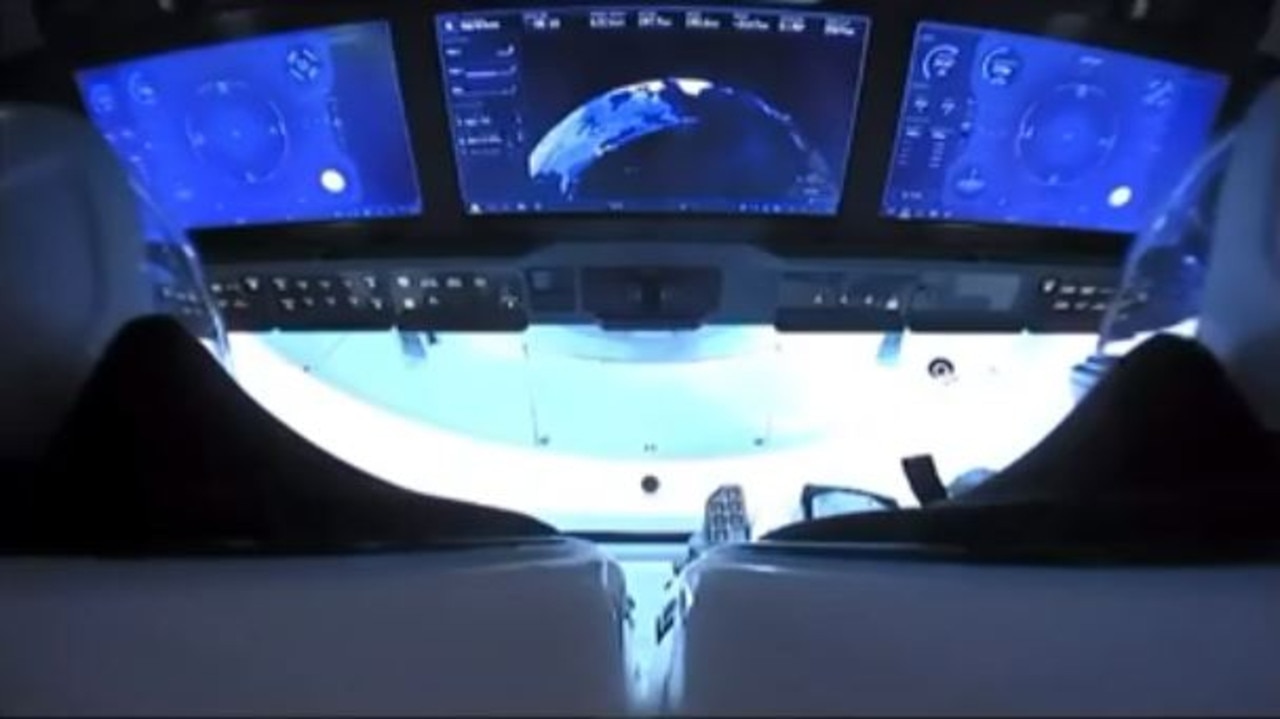
A successful launch means SpaceX will soon be granted approval to take more crews in to space in the future.
NASA administrator Jim Bridenstine was “praying” as the rocket took off.
“I’ve heard that rumble before but it’s a whole different feeling when you’ve got your own team on that rocket,” Mr Bridenstine said following the launch.
“And they are our team, they’re America’s team, this is Launch America, it’s everything America has to offer in its purest form.
He said the launch was a chance for the country to reflect as it faces “other challenges”.
“Times are tough right now, there is no doubt, we have the coronavirus pandemic, we have other challenges as a country, but I hope this moment in time is an opportunity for everyone to reflect on humanity and what we can do when we work together, when we strive and when we achieve.”
The capsule is expected to dock with the International Space Station 12.27am Monday morning AEST.
Boeing will get its chance at receiving similar qualification in 2021 after delays during its testing procedures.
An earlier launch planned for Thursday morning was postponed minutes before lift-off due to poor weather.
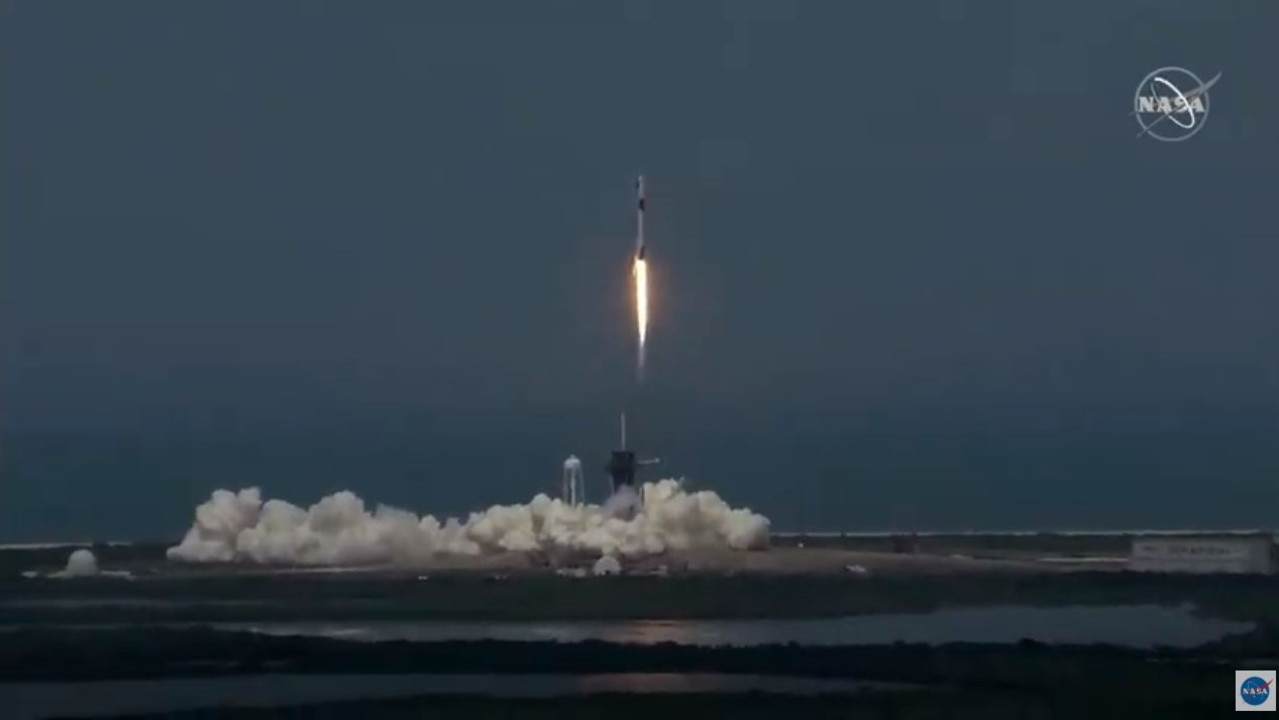
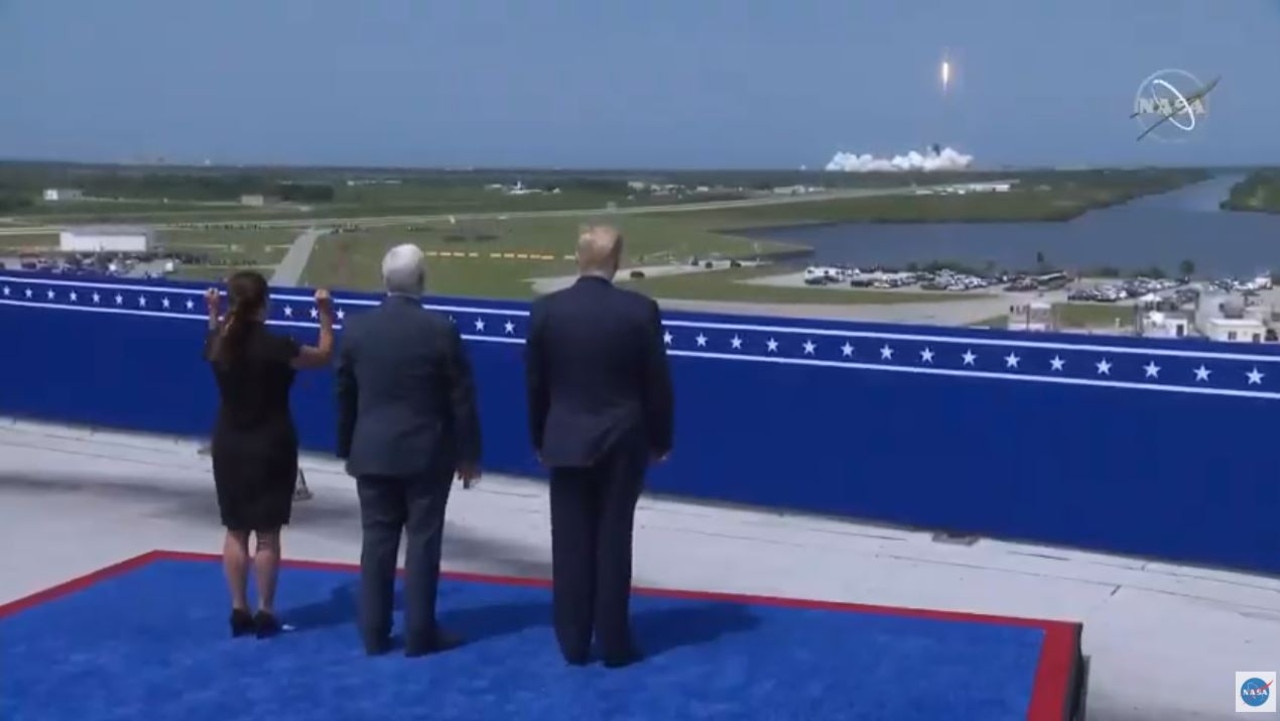
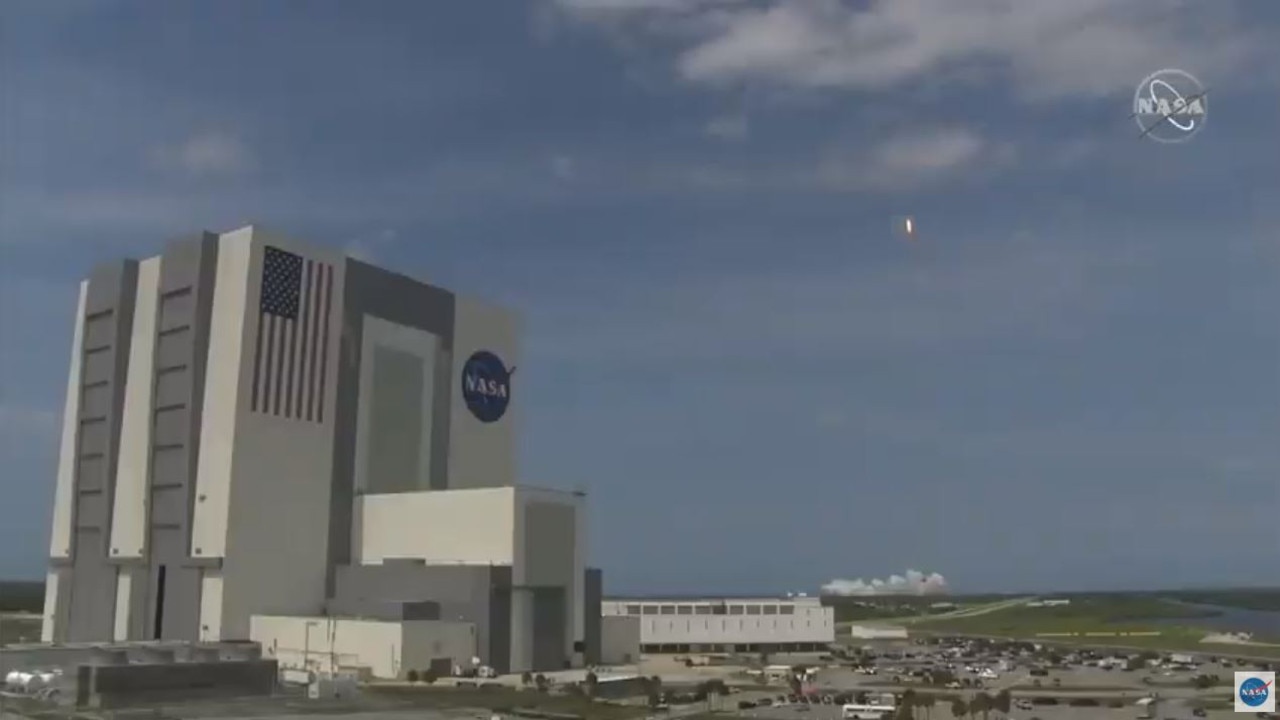
A NEW ERA IN CHALLENGING TIMES
The launch is hoped to usher in a new era of space exploration for the US.
“The President's agenda is just beginning,” Mr Bridenstine said at a later address introducing US Vice-President Mike Pence.
“He said we are going to go to the moon for a purpose because we as a nation is going to get to Mars, and I will tell you this area, this little agency we call NASA is excited about it.”
Mr Pence, who is also the chairman of the National Space Council, said the launch gave America a reason to hope in the midst of the coronavirus pandemic and protests against police violence and systemic racism currently sweeping the nation.
“It is an honour and a joy to be here with the President of the United States at Kennedy Space Centre on the day we made history, on the day American astronauts returned to space on an American rocket from American soil for the first time in nearly ten years,” Mr Pence said.
“For too long the American space program was neglected and ignored, those days are over.
“Under President Donald Trump, NASA is back, and America is leading in space once again.”
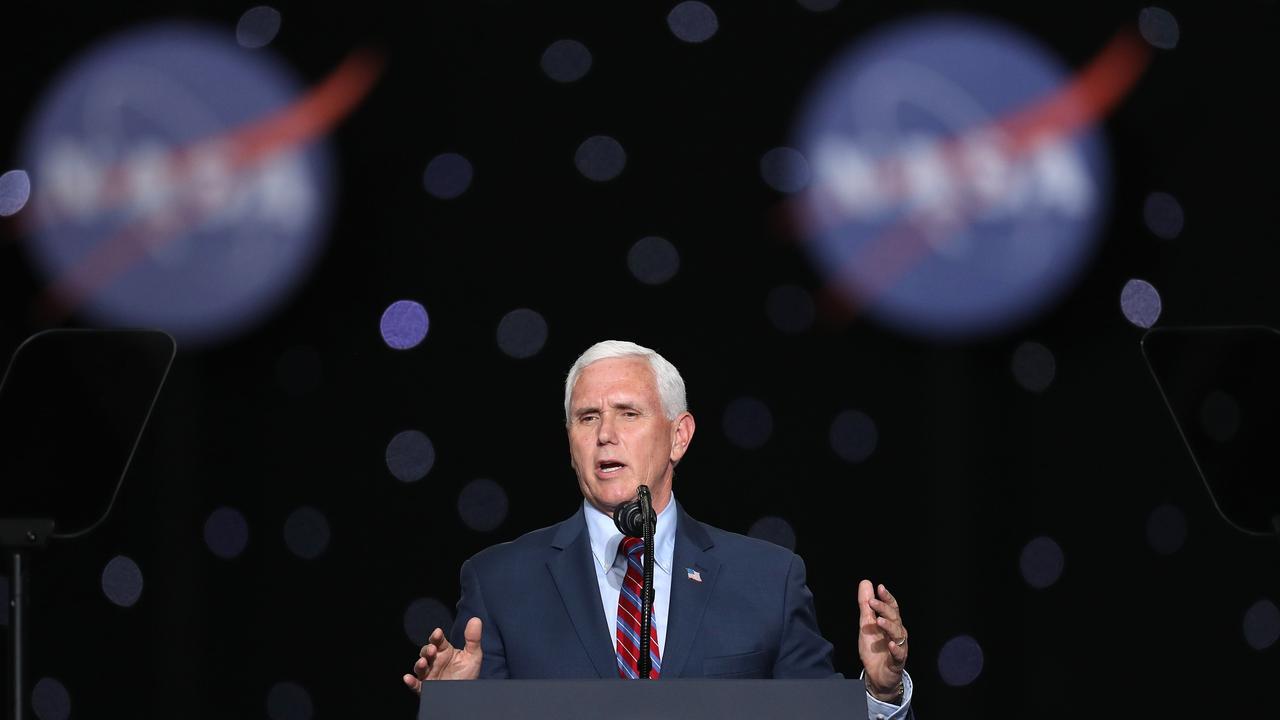
“It’s been more than 50 years since our nation first set out to leave this planet and land American astronauts on the moon, and today, under this President, we begin a new mission: to return to the moon and ultimately land American astronauts on the face of Mars.”
Mr Pence said the Apollo rockets of the 1960s “rose above the tumult and clamour of their times” as a “symbol of national strength and unity”.
“Today, as states across the nation take their first steps to reopen and recover from an unprecedented pandemic, and as our nation reels from the tragic death of George Floyd and violent protests of the past few days, I believe with all my heart that millions of Americans today will find the same inspiration and unity of purpose that we found in those days in the 1960s,” Mr Pence said.
“Today we begin a new era in space exploration, and the credit goes to dedicated men and women all across this country, to the ingenuity and the hard work of the entire NASA team. America is proud of the men and women of NASA.”
“But for the first time in our history, our astronauts have taken to the skies in a commercial rocket built by America’s private sector, so join me in a vigorous round of applause for Elon Musk and the dedicated men and women of SpaceX, job well done,” Mr Pence said before leading the applause and introducing President Trump while Lee Greenwood’s “God Bless The U.S.A.” played.
“It’s a big day,” President Trump said. “And I want to thank our great vice-president for your fearless and tireless commitment to fulfilling America’s destiny in space, thank you very much Mike, great job.”
“Today as we gather in this special place to celebrate not only the launch of a new space craft, but also our nation’s bold and triumphant return to the stars, it’s a special day. Moments ago the world bore witness to flight of the first new manned US space craft in nearly 40 years. I am thrilled to announce that the SpaceX Dragon capsule has successfully reached low-Earth orbit, and that our astronauts are safe and sound,” Mr Trump said as applause broke out.
“With this launch the decades of lost years and little action are officially over. A new age of American ambition has now begun.”
THE LONG ROAD TO LAUNCH
Sunday morning’s launch is a huge milestone for Elon Musk’s SpaceX company after years of working towards sending people into space.
SpaceX was founded in 2002 with the goal of colonising Mars.
While that goal remains quite far off, the company has since achieved several history making milestones for private space exploration.
SpaceX is now the first private company to send people into space, but before that was the first private company to successfully launch, orbit and recover a space craft in 2010, the first to send space craft to the International Space Station in 2012, and the first to orbit an object around the sun (a car from Mr Musk’s other company Tesla), among other achievements.
Today’s launch was technically a test flight, and the first time NASA astronauts have tested a new space craft in close to 40 years.
The next most recent test of new space craft by NASA astronauts was in 1981 with the space shuttle Columbia.
Columbia was the first craft that launched astronauts into space as part of the shuttle program.
The shuttle was destroyed in 2003 after it burned up on re-entry following damage sustained during launch.
All seven astronauts on board died.
The Space Shuttle program was shuttered in 2011.
The Commercial Crew Development program that replaced it has now sent its first two people into space, seven years after contracts were first awarded to SpaceX and Boeing.
Over the years SpaceX has continued developing other space craft, such as the Starship rocket (a prototype of which recently exploded during a test launch).
The Starship is eventually in line to replace the Falcon 9 launcher used for Sunday’s mission, and is hoped to bring a trip to Mars closer to reality.
It will also be used to deliver another SpaceX project: the Starlink satellite constellation designed to deliver internet services around the world.



